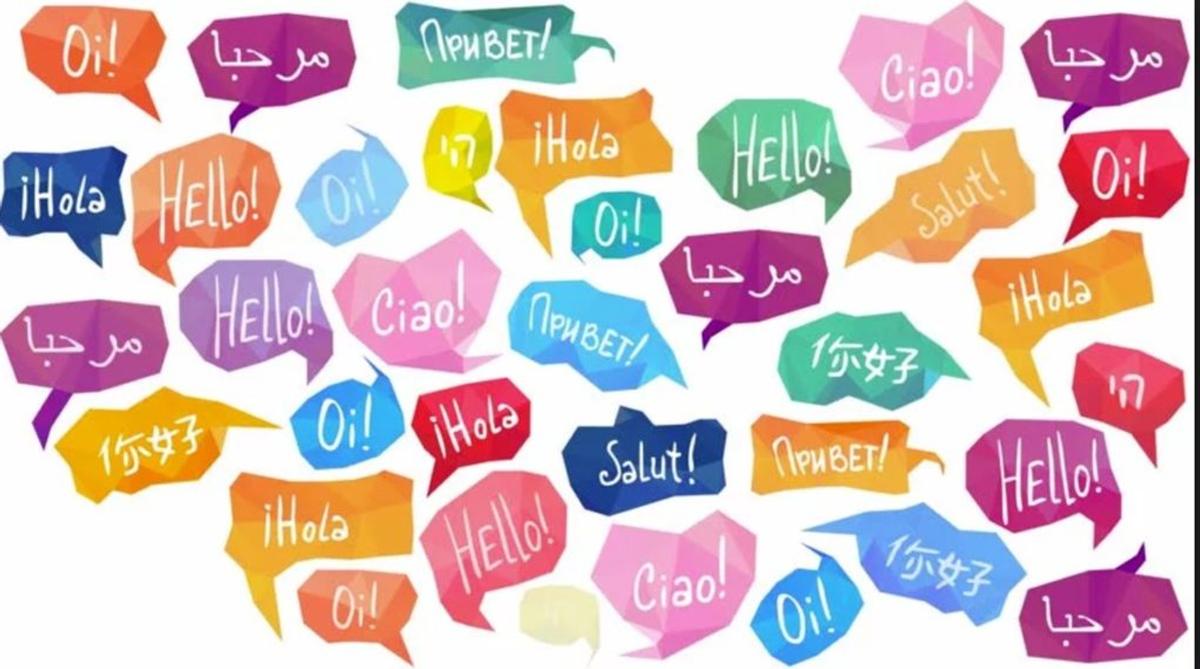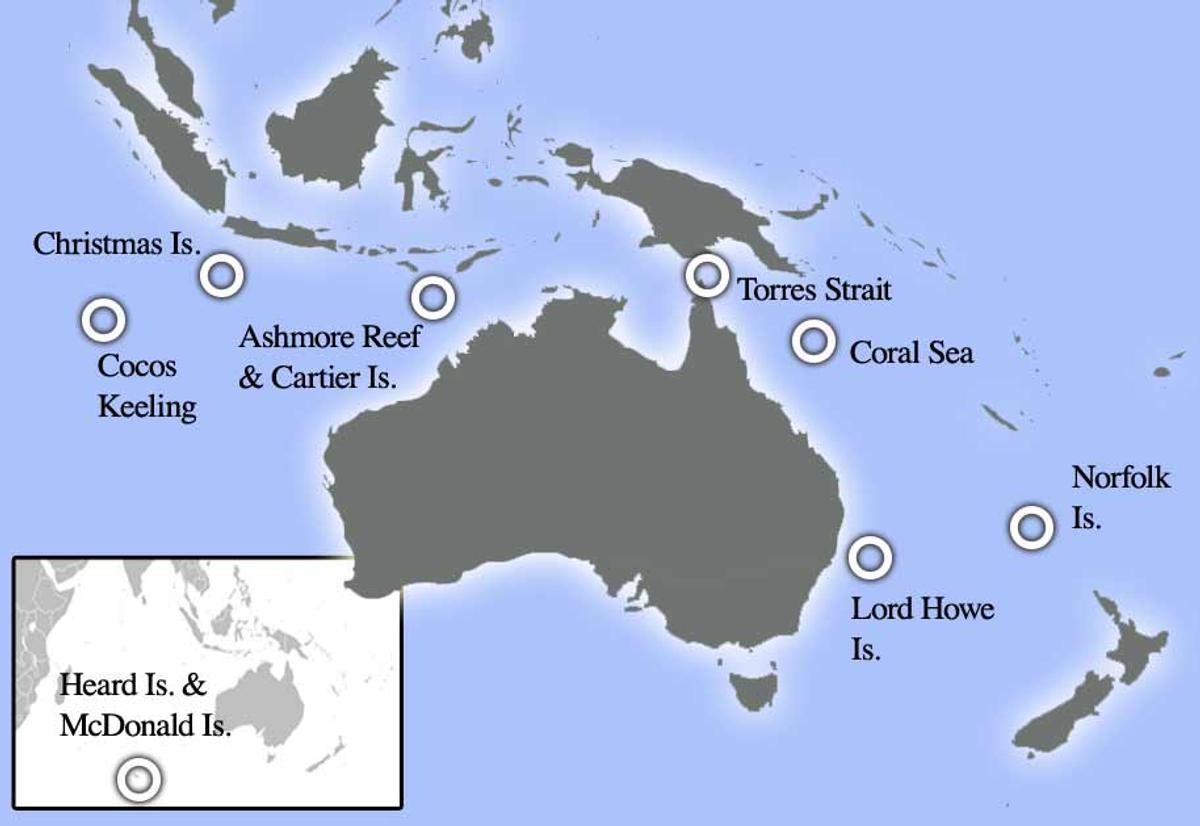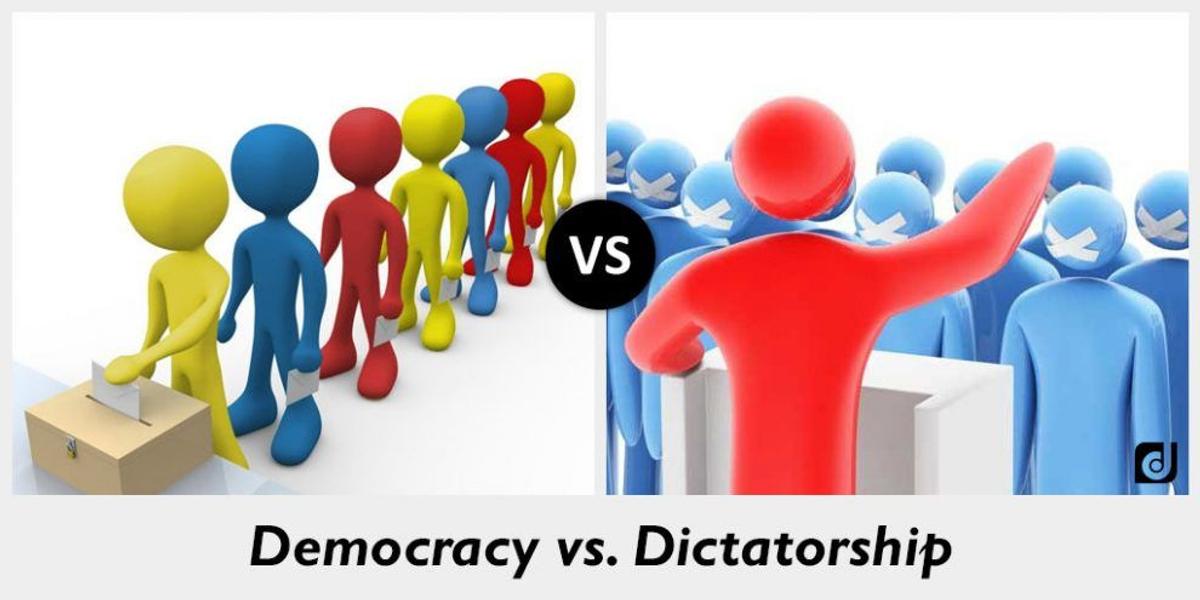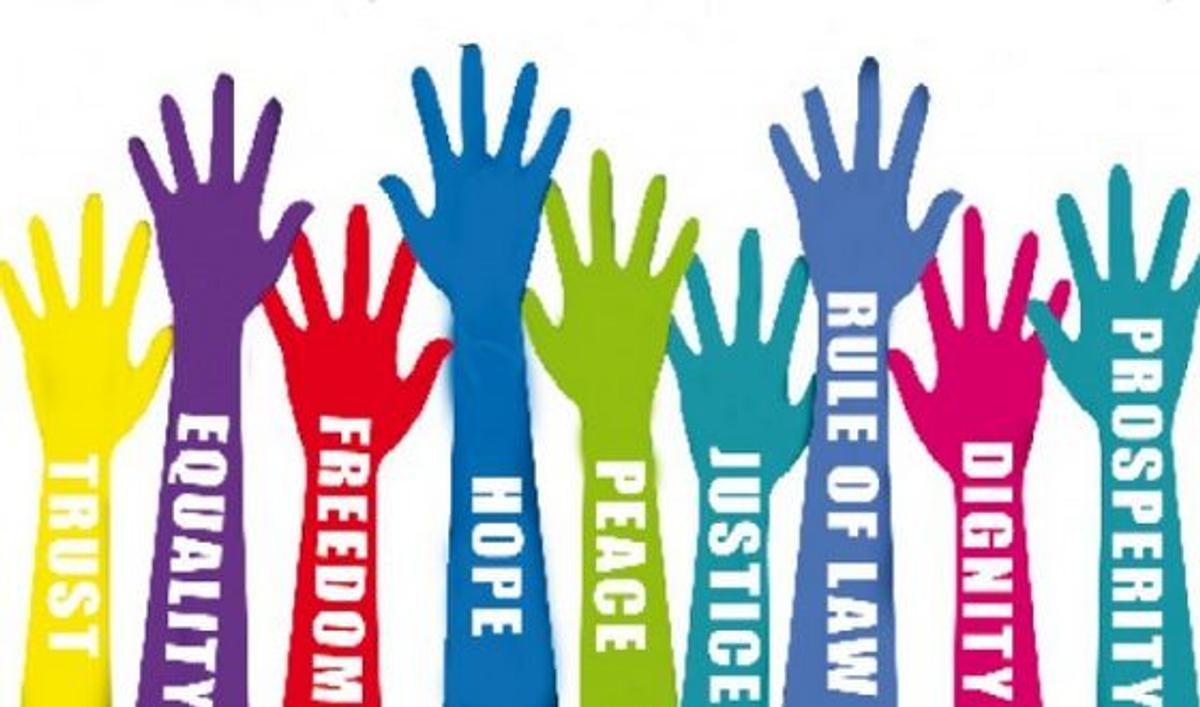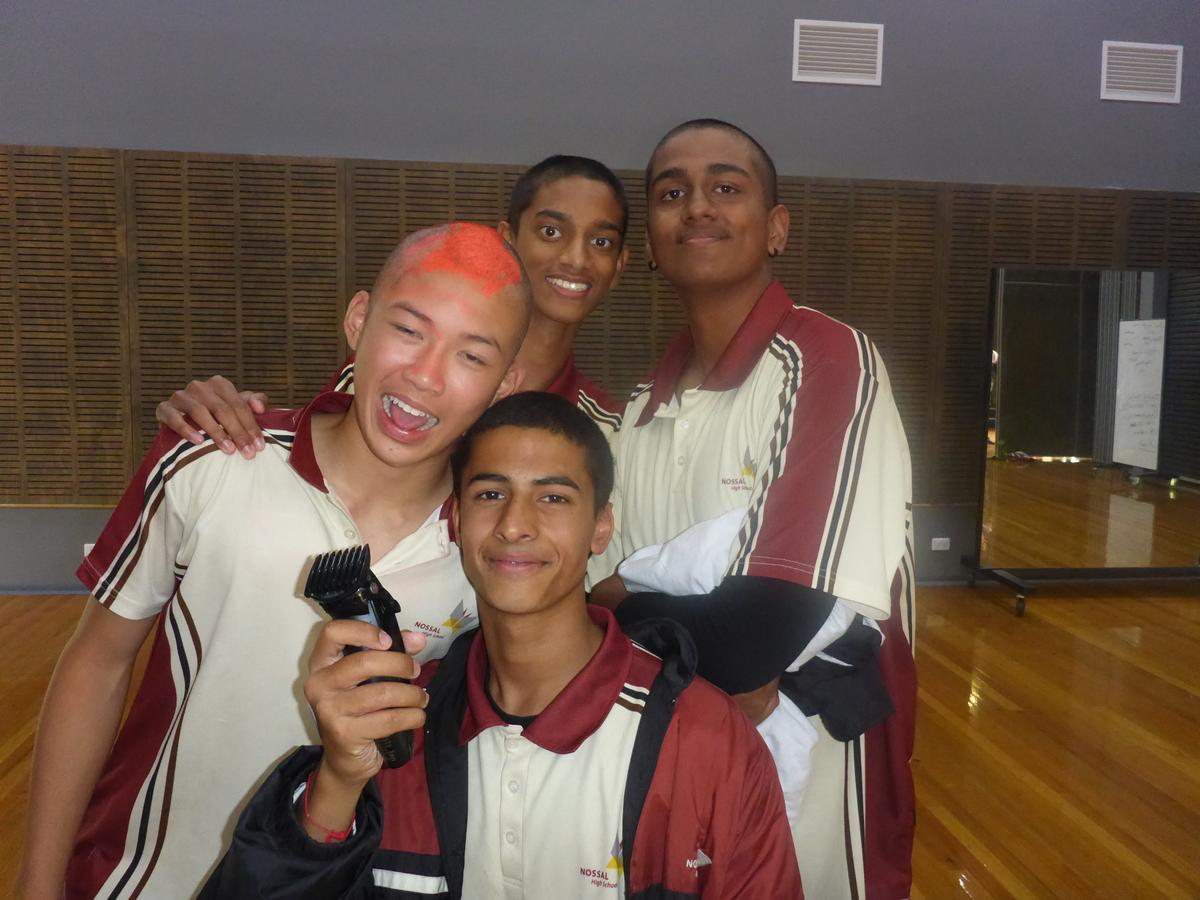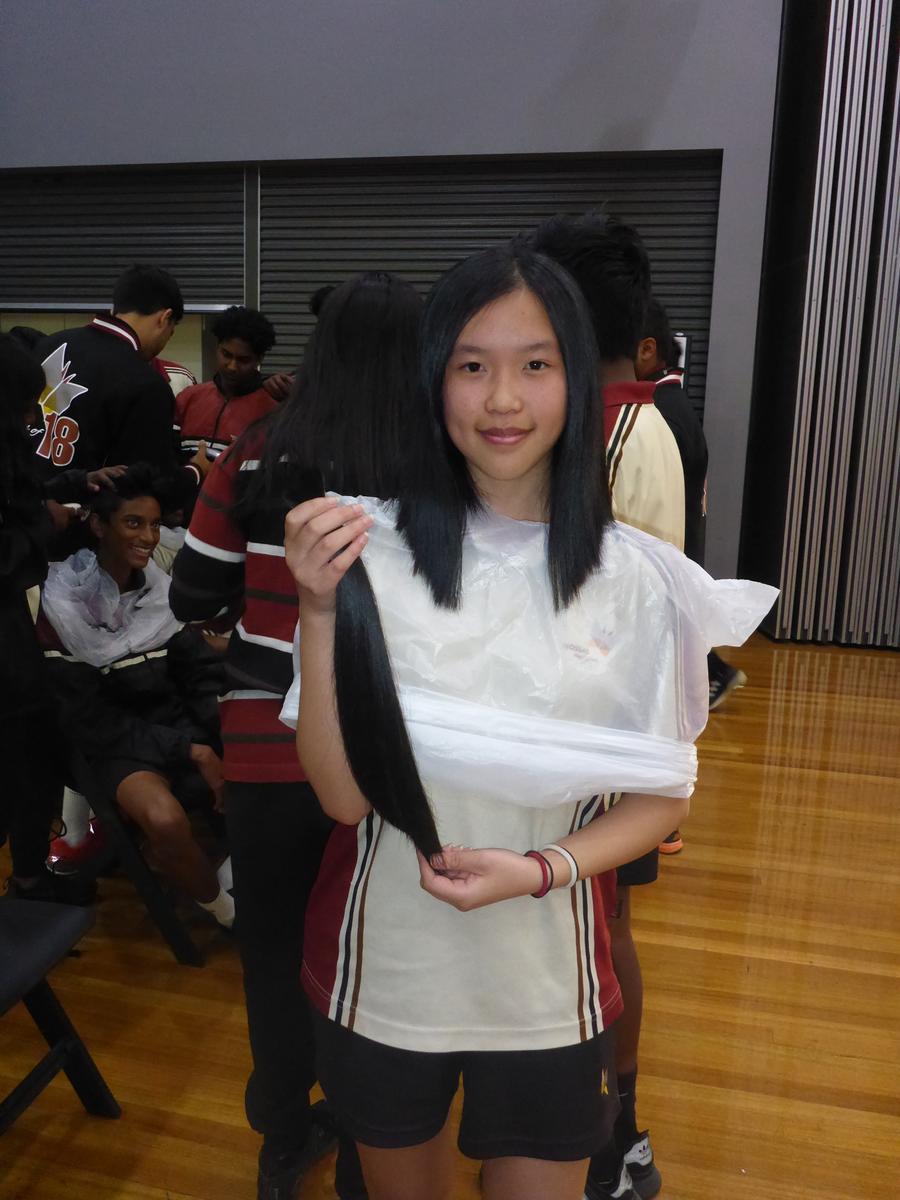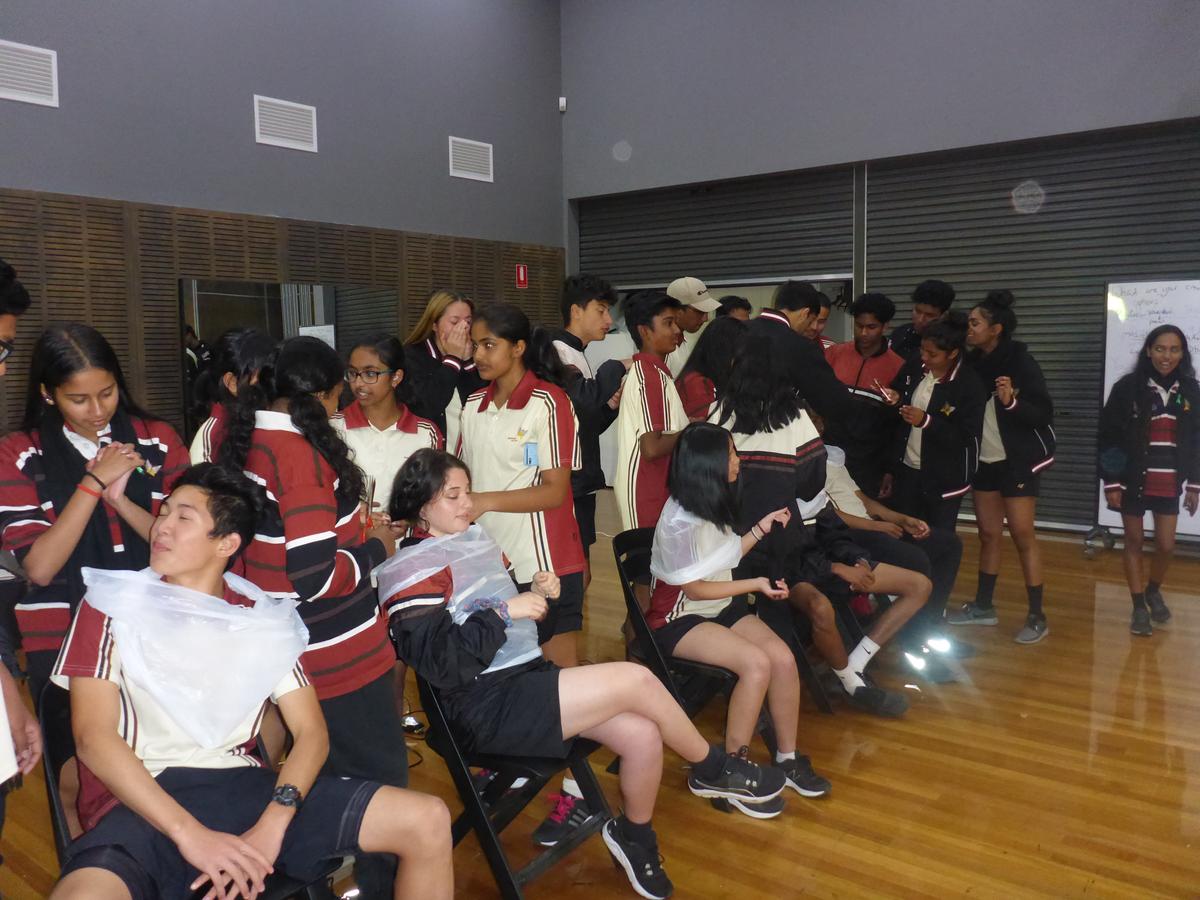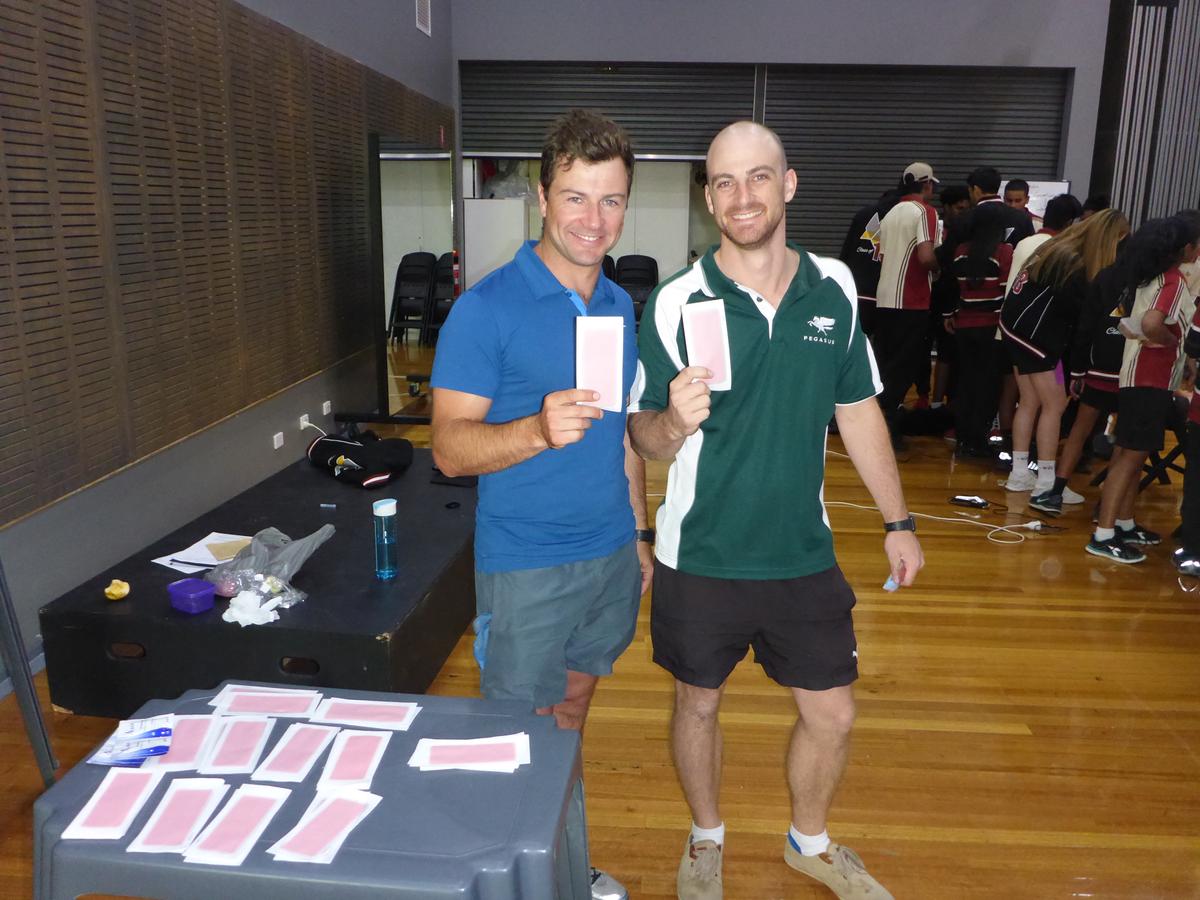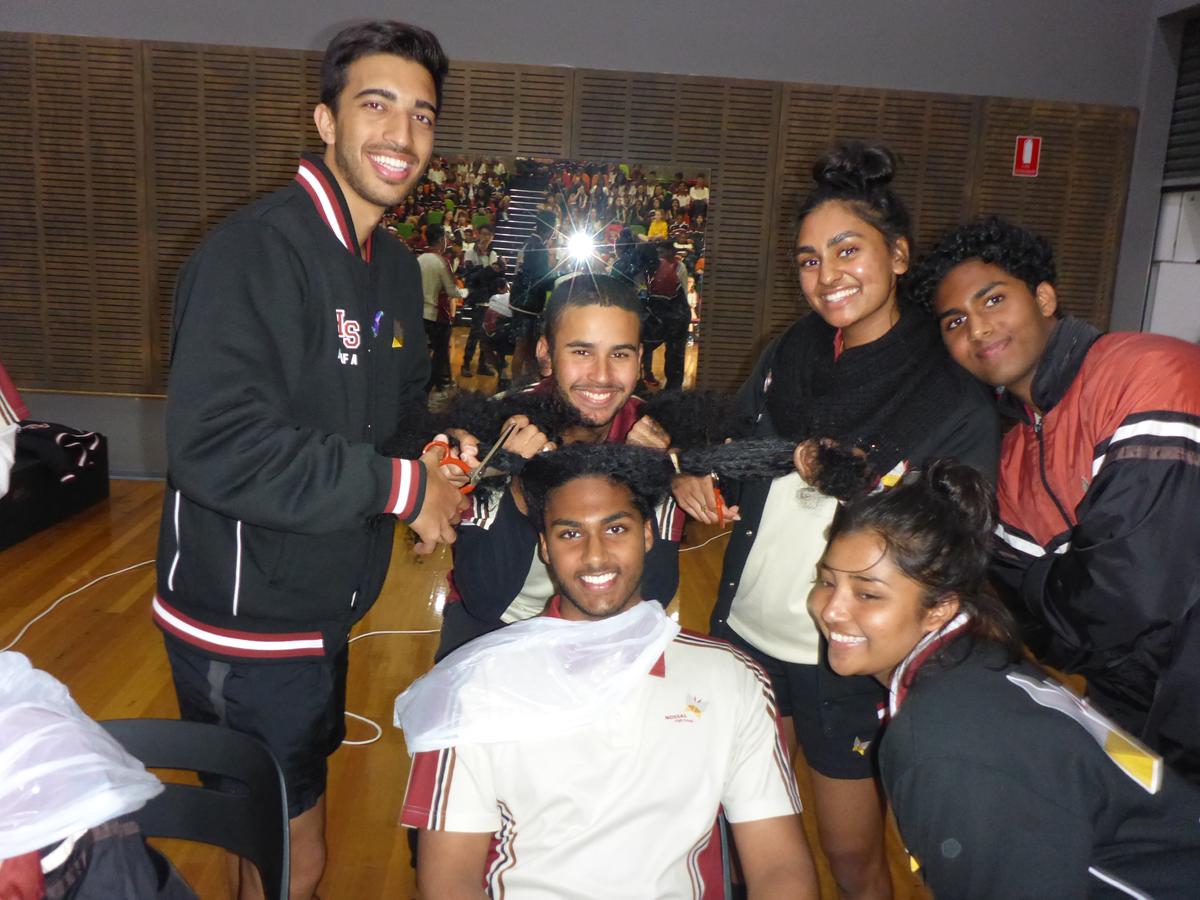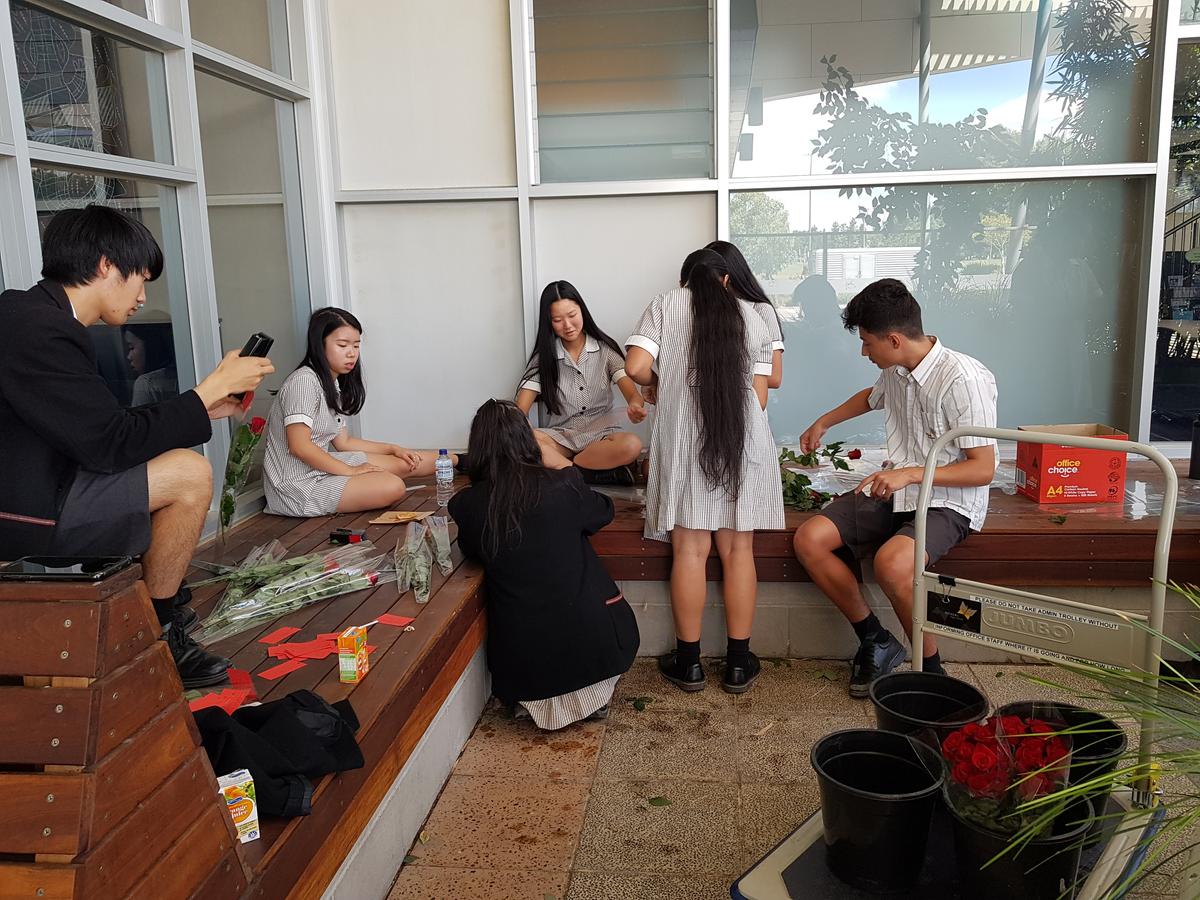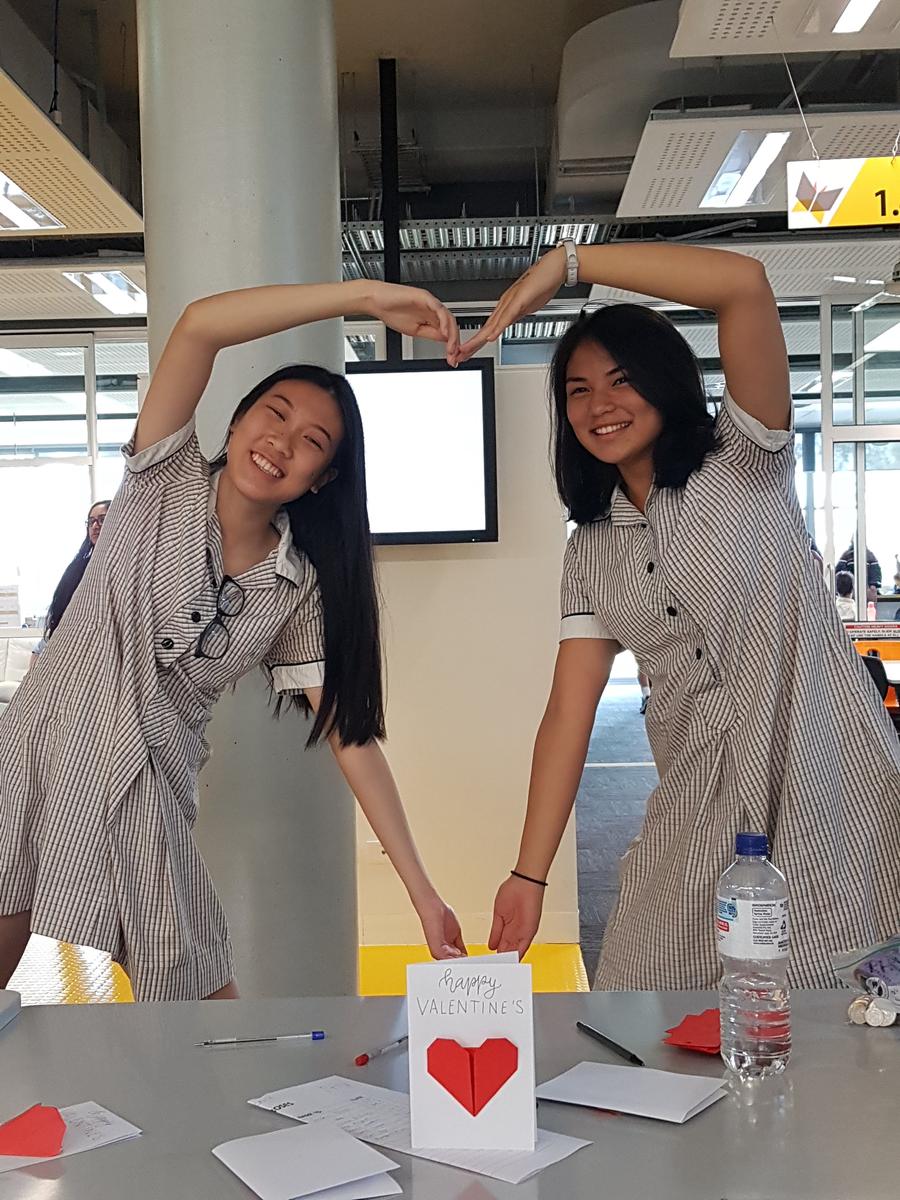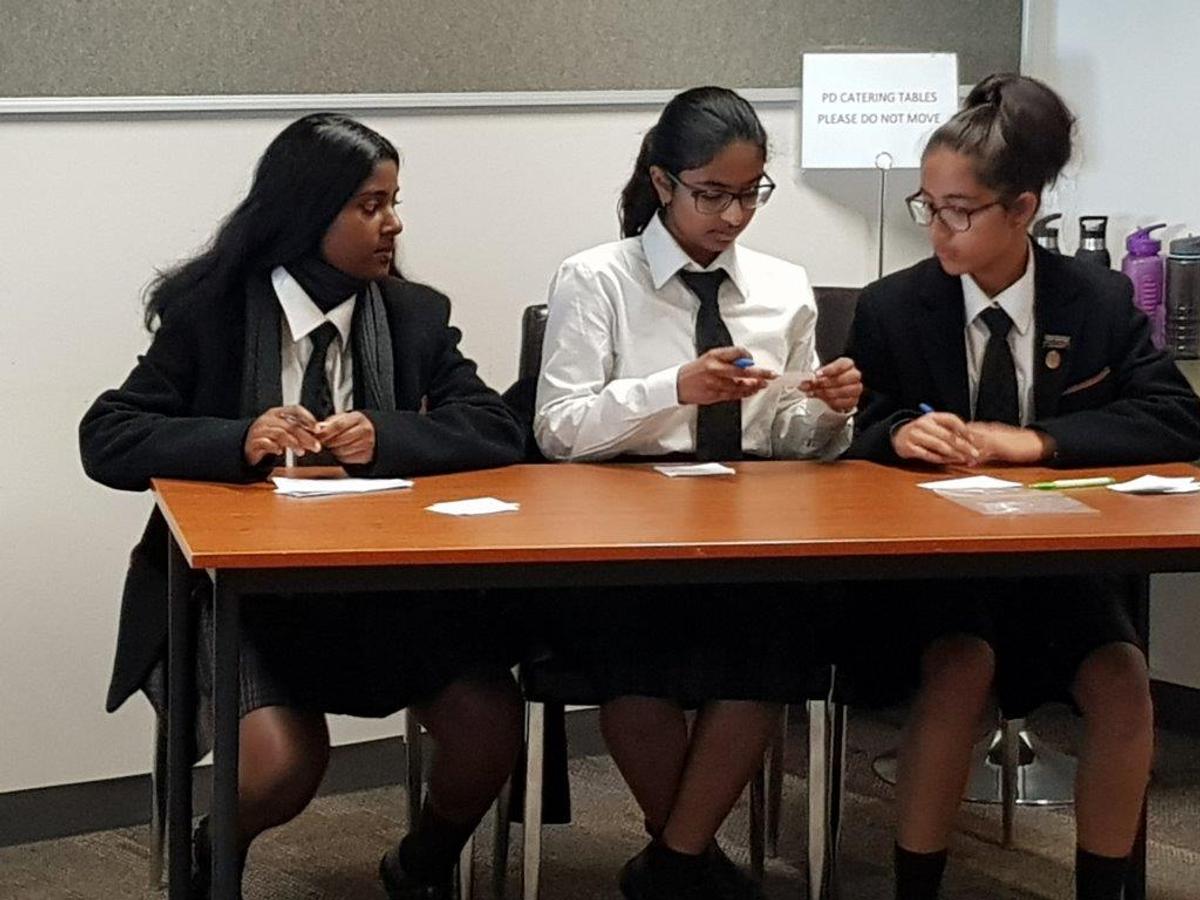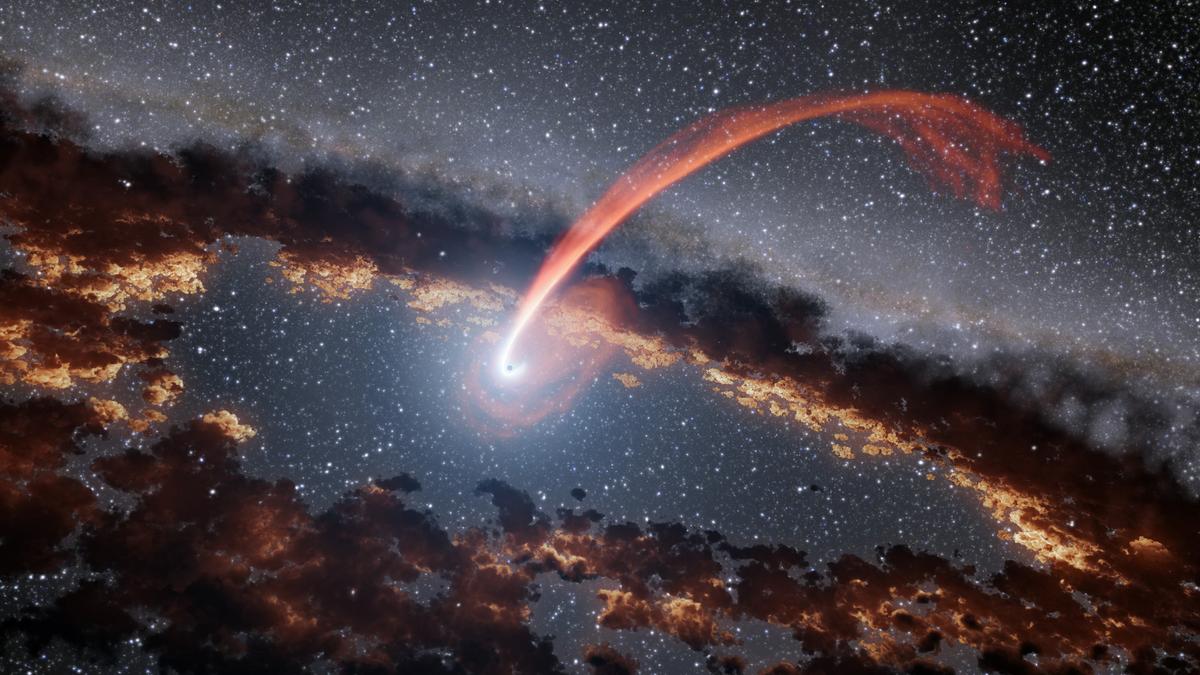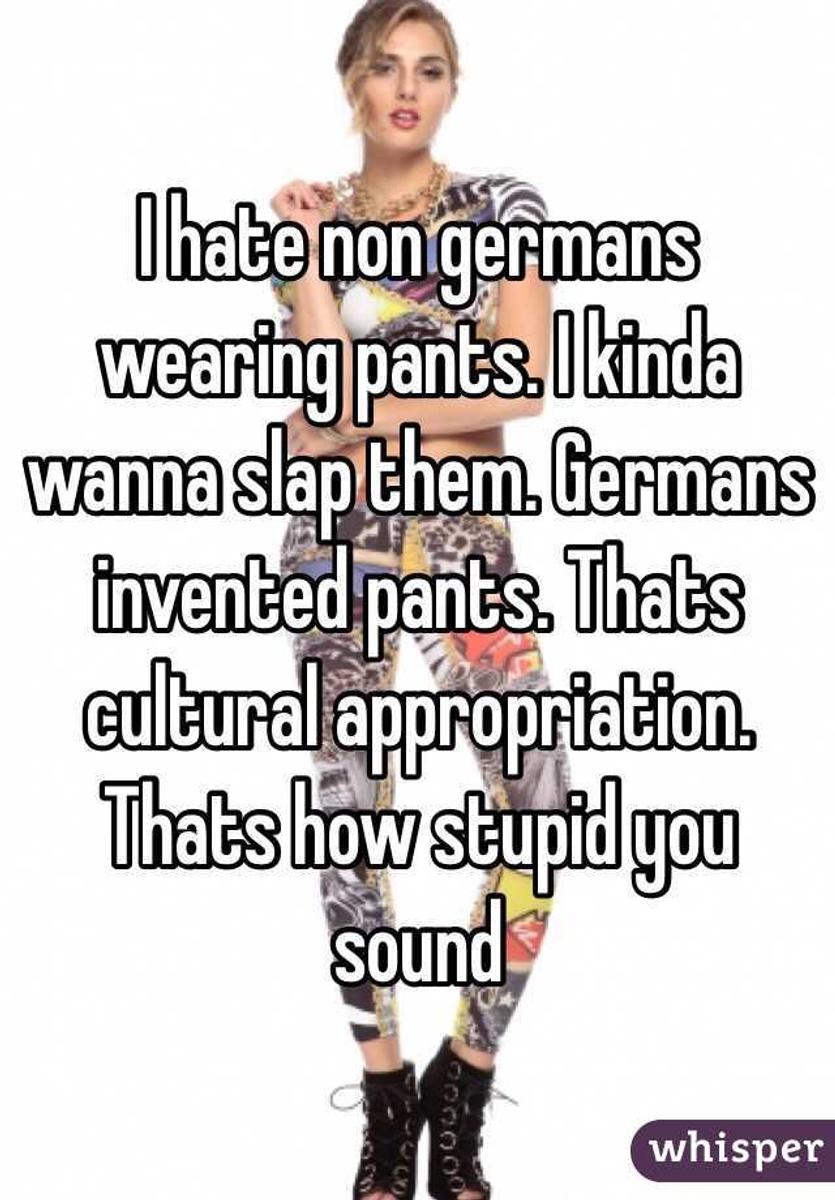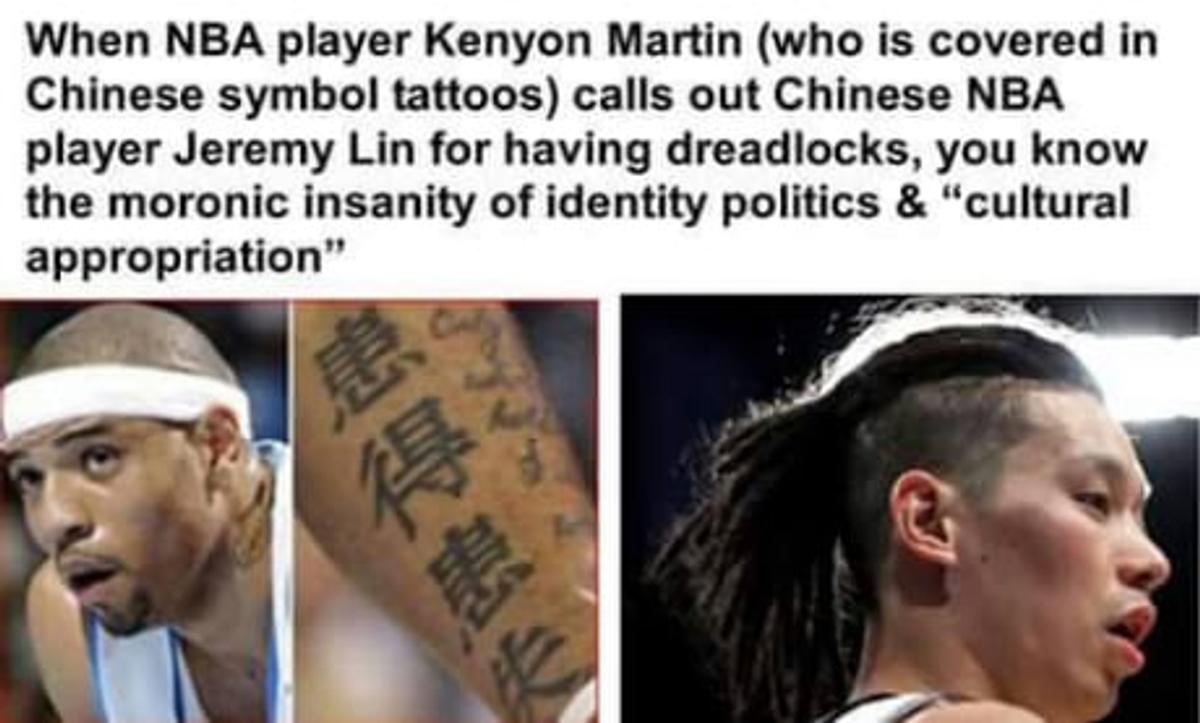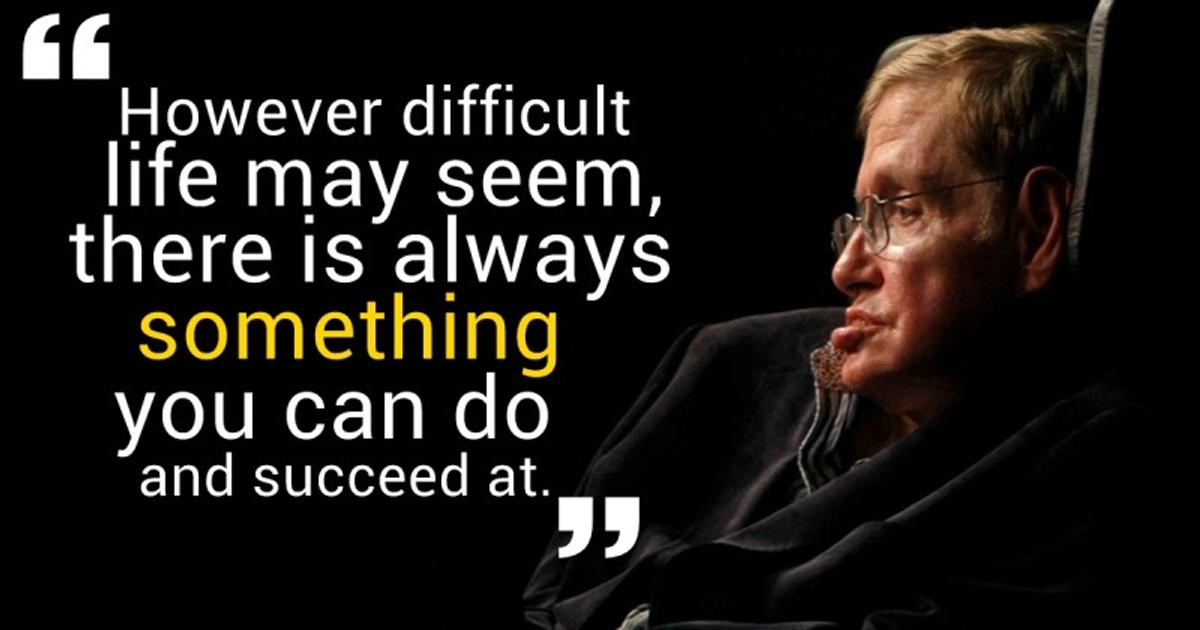Parallel - Student News

From the Editors: For Parallel, a new approach
Hi everyone, and welcome to the fifth edition of Parallel for 2018. This edition marks a new approach for Parallel: from now, we’ll be publishing monthly, in every second publication of Nossal News. We hope that this approach will allow for a greater depth in analysis and a higher quality of publication.
As well as this, keep a look-out for our very new and exciting website at parallel.nossalhs.vic.edu.au. It’s currently in the process of being set up, in order for you to be able to read all our articles, whenever you want, however you want.
As always, we welcome new contributors to Parallel -- if you’d like to have your voice heard, please contact Leo Crnogorcevic or Jordan van Rhyn.
Happy reading, everyone!
Jordan and Leo
Editors-in-chief
Creative Writing - Stars I
My thoughts are stars that I cannot fathom into constellations
Einstein’s theory of general relativity states:
'The speed of light within a vacuum is the same no matter the speed at which an observer travels.'
Our lives can be seen as the vacuum, the light everything we perceive as good and we are the observers all travelling at extremely different rates. We are all trying in our life to find ourselves and to build ourselves and even if we reach completion and are perfect we really will never be as we are never satisfied. This light we perceive as good we, observers, go chasing after it to reach that perfection; only we all travel at different rates to build ourselves.
It is said that one should keep their eyes on the stars but feet on the ground. To observers these stars have further meaning than being merely balls of gas producing light. Observers wishing upon stars give them value, emotion and identity to which then these stars carry on their feelings, desires and wishes. And that is what we perceive as good. That is the light that the stars emit and that is why some stars shine brighter than others. The stars have feelings and everyone has a star– no, rather it is more that we are the stars as the stars become what is the best in us. We aim to be that star. This is where "reaching for the stars" comes in. We all reach for the stars but it seems the further we reach the further away the star, the good in us, drifts away and gets lost in the sky. But once washed up in the darkness, that's when it glows the brightest.
The reason we observers will never reach the light is for the fact we are never satisfied. We may already be the star yet we won't feel it and will aim for more. We will explode up like a star at the final stage of its life cycle and rebuild once again.
So what is it I want to express? That stars have feelings as we wish on them. That we give them an identity and that identity is the light within us that we emit. Some of these stars glow brighter than others. Now think of the sky as the world. As we try reach for the stars we get lost in the world and daylight of life we also lose ourselves but as soon as it gets darker the stars shine brighter. We are the stars and we break and explode like them only to rebuild once again to glow brighter and brighter. In the end we try to grasp the light we emit and be that good we could be. We observers all travel to reach that light all at different rates within our vacuum of life.
The light we see is the good in this world and all light has the same properties. However, our perceptions of it are all different. Though we are all stars of the same sky what we view is different from each other and the wishes and light we emit is different- yet the same. Same in the sense I believe stars cannot shine by themselves– they shine brighter with others. Together bouncing the light off each other and glowing brighter than ever.
This is my interpretation of stars having feelings. This may not be what you were thinking but after all, we are stars of the same sky emitting the same light yet though we see the same thing we perceive it differently.
Nayeer Umran Alam
Year 10
Editorial: A world in words
For many Nossal students, second languages are associated with tedious weekends spent at language schools, or deadening linguistic instruction about sentence structure, noun cases, and tense constructions.
But for linguists, nothing could be further from the truth. Lexicographer Bruce Moore once stated that “of all the markers of identity, language is by far the most significant.” And he was right. We see the world through the window of our languages. Our personal identities and conceptions about the world are coloured by our use of languages, and our senses of community, belonging, and culture are reliant upon the continuation of our languages. And those languages contain knowledge - of traditions, views, and values - which is lost when the languages are no longer spoken.
In this country’s Indigenous population, this fact is shown in the most sombre of ways: At the time of European arrival in 1788, there were more than 500 language varieties on the continent. Since then, due to genocide, disease, and forced removal from land, more than three-quarters of those languages have been lost. The vast majority of those languages still in use are highly endangered. In our state, almost all have become extinct. Indigenous communities have suffered a loss of identity because of the homogenising wave of English media, education, and institutions. Some hope, however, remains: The Victorian Aboriginal Corporation for Languages (VACL) runs a number of language revival projects in Victoria, in the Gunai and Yorta Yorta languages, as well as community workshops and advocacy operations. But it will likely never return Indigenous languages to the status which they should have kept. And on the other side of the language-identity coin, the rise of English as the lingua franca -- common language -- of the world in commerce, media, and global communication has resulted in a world essentially geared towards first-language English-speakers, who are able to travel and communicate with people from every region of the Earth because of their language’s imperial and colonial history.
And in our own country, where more than 20% of Aussies speak a language other than English, language is a contentious issue too. Some Australians still refuse to acknowledge the fact that the Commonwealth is, and always has been, a multilingual society. Multilingual citizens have been verbally and physically assaulted for speaking languages other than English; and in Sydney, Strathfield City Council recently proposed a motion which would require all storefront signage to be primarily in English. This is in spite of the fact that Australia does not have an official language and is one of the most linguistically-diverse countries in the world. In Strathfield itself, 68.5% of households speak a language in addition to English. These are not foreign languages -- they are the languages of a multilingual society.
The United Nations’ International Mother Language Day program (21 February), proclaimed that:
“Language is fundamental to communication of all kinds, and it is communication that makes change and development possible in human society.”
Our languages are vital components of who we are. They colour our views of the world and contribute to societal development. Our public policy should reflect that fact, and recognise the benefits of languages other than English in Australian society; and it should promote reconciliation through the revitalisation and use of Indigenous languages in Indigenous communities and the public more generally.
Jordan van Rhyn
Year 12
The Explainer: Australia’s forgotten territories
When posed the simple question "how many territories does Australia have?", the answer may seem obvious. Two, right? Although the Northern Territory (NT) and the Australian Capital Territory (ACT) are ostensibly the sole territorial anomalies the world's sixth-largest country lays claim to, the situation in reality is far more complicated.
In most maps, lists and territories, Australia is erroneously described as having two territories - the aforementioned NT and ACT. Most will be able to point out the ACT's special status within the country's political structure. It houses the national capital, and historically came about in a bid to avoid upsetting either Melbourne or Sydney’s endeavours to do so instead by virtue of being the two largest Australian cities. The NT, on the other hand, blurs the line between what a state and territory are. Unlike the ACT, they do not seem to have any special significance that would warrant them being distinguished from other states. Despite the ACT's connection with the federal system of politics, both they and the NT exhibit the typical traditional characteristics of other states. Both have a locally-elected legislature, stable population and a government managing aspects such as transport, health and education. The distinction therefore between these territories and other states is technical: the ACT and the NT are not states because they were formed relatively recently, rather than the states, who trace their existence back to the original colonies. In this sense, the NT and ACT are states because the Commonwealth ceded power to them, as opposed to the way in which states retain their own sovereignty within the federal system.
This is where the mistake that Australia only has two states comes in. Because the NT and ACT seem so similar to other states, a lot of the population fails to recognise the largest category of Australian territories: overseas ones. In fact, Australia has seven of these overseas, or external, territories. They are, in decreasing order of population: Norfolk Island, Christmas Island, the Australian Antarctic Territory, the Cocos (Keeling) Islands, the Coral Sea Islands, the Herald Island & McDonald Islands and last, but not least, the Ashmore & Cartier Islands.
As one may be able to infer, the vast majority of these territories are isolated islands. They are all scattered within either the Indian or Pacific oceans, having permanent populations of no more than 2,000, if any at all. What is more interesting, however, is their relationship to with Australia. Although these are not considered to be a part of 'geographic' or mainland Australia, they are nevertheless entirely independent. Instead, all of these external territories are currently managed by the Department of Infrastructure, Regional Development and Cities, all the way from Canberra. Unlike other dependent territories of countries, Australia's external territories do not have any self-governance (although Norfolk Island had its own Legislative Assembly until it was abolished by the Abbott Government in 2015). This has led to strange, parallel relationship between the territories and the Commonwealth, with them having negligible self-autonomy, whilst not considered a part of Australia proper, while even more bizarrely still being able to vote in federal elections, as if they were residents of either the NT or ACT.
The vast majority of these islands came into Australian possession when they were handed over from British control to more local Australian ones. They were either British crown colonies or dependencies, until such a status was transferred to Australia. What's also surprising to note is that Papua New Guinea was an Australian territory itself, until it gained independence in 1975.
Considering that such territories are considered 'external', it could therefore be concluded that the ACT and NT are therefore Australia's two 'internal' territories', with the latter types of territories possessing self-government, whilst the former do not. This is far too simplistic for the world of Australian politics, of course, which is why there exists an even weirder in-between entity known as the Jervis Bay Territory (JBT). The JBT is a strip of land on the coastline of New South Wales, formed in 1915 as Australia's third internal territory. Its creation stems from desires of the Commonwealth Government at the time for the landlocked ACT to have access to sea, as both territories were to be under the direct control of the Commonwealth. However, instead of this land being directly ceded to the ACT itself, the JBT, an entirely new territory was created, only to further complicate the intricate relationship between Australian states and territories, internal and external.
Being able to recognise these territorial anomalies is not just significant in terms of their fledgling populations, or even it being a cool trivia question, but also to remind ourselves of the very real colonial heritage that Australia continues to maintain.
Leo Crnogorcevic
Year 11
Op-Ed: The Pros and Cons of Democracy
People are idiots. I’m sure we are all well aware of this fact, and yet in the infinite wisdom of the founding fathers of most Western states it is these exact idiots who have just as much say in the direction that our country takes as you or I. You do not have to be particularly politically inclined to admit that the brand of populism that spawned the Trump administration and the Brexit vote is not the result of well-informed voters, but the electoral equivalent of an angry mob waving their picket signs in the face of the political establishment. Even Winston Churchill famously quipped that “the best argument against democracy is five-minute conversation with the average voter,” and in Australia witnessing the erosion of the two-party vote to fringe groups like One Nation, perhaps it is time that we move away from the concept of popular rule and entrust the running of our nation to those who actually know what they are doing. However, it is another Churchill quote that argues quite the opposite: “democracy is the worst form of government, except all the others.” So, whilst we may disdain the idea, perhaps rule by our peers is the least worst system of government to which we may be subjected.
The concept of a more limited democracy might sound foreign and authoritarian, but it is already something that is represented in our political system. There is no such thing as pure, direct democracy in the 21st century (although Switzerland comes close), instead we live in a representative democracy where we elect those who we believe best represent our views to parliament and trust that they will make an informed decision. This system, combined with the rules in our constitution delineating the powers that the parliament has over our lives, was an attempt by the founders of Australia to limit the damage that the people could do to themselves. Without such protections, the idea of a tyranny of the majority, where the 51% can vote on the fate of the remaining 49%, is not unimaginable. This idea may seem outlandish in the modern day, but one must only look to the fringes of the political spectrum to see the dangers that uninformed vitriol can have. It is telling that not a single member of either mainstream party had shown anything but disdain for the immigration policies of One Nation, and yet that party holds an arguably disproportionate amount of power in the Senate. Populism is termed that for a reason: it is a platform determined by what is popular, but it is largely held in contempt for that very same reason. What is popular is very rarely what is in the best interests of a nation, and some of the most famous leaders in history had to make choices that were unpopular, but ultimately right. Cutting immigration may prove popular with One Nation’s base, but the decline in Australia’s population and economy as a result is not something that any citizen wants to see, and the protections of our representative democracy attempt to defend us from this.
Australia has had 5 different Prime Ministers since 2007, highlighting how a fickle electorate can make decisions that promote short term thinking for politicians. With only three years to prove that they are doing a good job, a government will often struggle to focus on long-term policy whilst also remaining ahead in the polls. The astronomical debt of the United States can be partly blamed on the unwillingness of Congress to cut spending, something that will make them deeply unpopular. Politicians would rather pass the buck to future generations, saddling them with an economic time-bomb, than lose the next election. The rise of China is a clear example of the benefits that a more authoritarian approach can bring. The reason that China is able to undertake such massive long-term infrastructure projects and implement wildly unpopular laws like the one child policy is that their politicians are not forced to constantly gratify an endlessly critical electorate. Whilst China’s system has just as many, if not more, flaws as democracy, it provides a good example of how ineffectual the short-term focus of democracy causes our states to be.
Like capitalism, democracy is an easy institution to criticise but, also like capitalism, it has brought us untold prosperity. Limiting the democratic input in government can just as easily bless a country with a Lee Kuan Yew (considered to be a benevolent dictator who transformed Singapore into a wealthy, modern state) as it can saddle them with a Stalin (dictator of the Soviet Union who executed anyone posing a political threat to him whilst millions of his own people starved as a result of his policies). As attractive as safeguards on democracy can be, democracy itself acts as a safeguard against authoritarianism and oppression. One must remember that advocating for limited popular input in government can just as easily exclude oneself from the democratic process as it can those that they consider unfit to vote. The West seems to have settled on a compromise with the spread of representative democracy, limiting the input of each individual citizen, but also limiting the power of our politicians by holding them accountable to both the electorate and a series of checks and balances.
Despite its failings, it is fairly safe to say that democracy is the best out of the myriad of flawed political systems humanity has lived under.
Tom Ellis
Year 12
SRC News
Welcome to the new SRC news! The Student Representative Council will be contributing to Parallel to bring you the latest updates on what’s going on with your SRC. We’ve got plenty of initiatives planned for the year and we always welcome your suggestions and input!
This year the Council consists of:
Year 9: Alexandra N, Benjamin M, Nadia H, Nalini J, Nam N, Zhengqin O
Year 10: Aaron N, Diyana W, Hiral S, Pavithra, Sayed R, Rahul P
Year 11: Aleena B, Alvin S, Anna H, David B, Nicole C, Raj J
Year 12: Abhishek K, Chance L, Jasnpreet K, Lorenz J, Margaret X, Thomas E
School Captain Team: Aditya G, Grace A, Samantha C, Samuel B
So – what have we done so far this year? You probably remember that the SRC ran a Valentine's Day event selling roses and serenades. We had also held the famous World's Greatest Shave to raise funds for those suffering from blood cancer. Both were highly successful events! The Year 10 representatives were behind the organisation and planning of the Select Entry Network (SEN) Cup on Friday 18 May. It was a fun day for all the select entry schools to come together to enhance their already strong bond.
If you’re not already aware, Nossal has an Instagram account! The SRC have plenty of things planned for the page so make sure to follow at @nossalhighschool so you don’t miss out. As for upcoming initiatives: we’ll be introducing a sun-screen station at school for those hot summer days of Term 4 and we’re going to be working with everyone on giving the student diary something of a revamp. We’re also trying to push for more vegetarian options in the canteen, getting students more gym access, more bins around the school, making Nossal a more Sunsmart school and getting paper towels installed in school bathrooms.
Although we can’t always guarantee success, what we’re trying to show you is that we are here to listen to you - to campaign for your wants and needs, and to support you in trying to make this school perfect.
Even if we can’t always get you what you want, we hope our dedication to fulfilling the suggestions we receive from you shows just how much we care about making sure your voice is heard.
Please let us know if you have any suggestions for the SRC – no suggestion is too big or small! SRC Suggestion Box: https://goo.gl/forms/IgUFVhiUndOK9WHk2
Love, your 2018 SRC <3
Have your say - does the Nossal Canteen need to offer more vegetarian options: https://docs.google.com/forms/d/e/1FAIpQLSfS7rVGQeRKFIjiNcqgQioD1mAZOuaWwSpm5lzHM2_yIV2DBQ/viewform?usp=sf_link
Year 10 News
This year was the first that the SRC have organised a Selective Entry Network Cup, and our Year 10 students were lucky enough to take part in such a fun and friendly competition. The students of Nossal High School were spread across the other Selective Entry Schools (Melbourne High School, MacRobertson Girls’ High School and Suzanne Cory High School) on the May 18 to compete in a variety of events, such as table tennis, netball, badminton, volleyball, chess, trivia, OzCLO, debating and theatre sports.
The Year 10s worked extremely well together and showed impeccable sportsmanship towards the other competing schools. Despite some minor issues with team try-outs and selections, the Year 10s were still able to prepare themselves for the challenges that they had to face that day, which was shown in our results, as Nossal placed 1st in four events, 2nd in two events and 3rd in three events.
The SRC worked very hard to make sure that the day ran smoothly and that everybody was having a good time representing Nossal while also interacting and socialising with the other Selective Entry Schools. Without the SRC, the SEN Cup would not have been possible! Thanks also to Mr Butler and the other staff involved it making it such a great day.
Somathyda Rim
Year 10
Creative Writing - Stars II
It is theorised that there are three types of black holes. The Stellar, Supermassive and miniature (Primordial). When people and stars explode up they sometimes lose it all and become the empty shell of themselves losing all the light. In an attempt to try fill that empty shell, they try to eat up other stars to become a star themselves again... These are stellar. These are the lost stars. Miniature black holes are the unseen struggling stars that do not feed... these two types seem okay but the supermassive.... The darkest of black holes are traps that form evil. They are everywhere. They are in the centre of everything, always lurk and drawing in more and more stars. Sometimes when surrounded by the darkness of life these darker black holes blend in and no one can see them. That is how they hide and mask themselves. They love to eat the brightest of stars and unlike stellar these are not fully lost or sad but are emotionless and hollow towards others disguising themselves and drawing stars in greedily. Always wanting more and more trying to consume those stars, They eat and eat and do not stop eating and soon no light within their grasp can escape. These are the dark shells that form more black holes or dim the light.
Nayeer Umran Alam
Year 10
Cultural appropriation: has it gone too far, or have we?
As our population becomes flooded with those lacking thick skin and letting their emotional sensitivities direct their views, we must ask ourselves the question: are we really trying to respect and consider each other’s differences, or have we just fallen victim to political correctness?
Cultural appropriation is commonly defined as ‘a concept dealing with the adoption of the elements of a minority culture by members of the dominant culture.’ The detestation of this has merely become a way to separate and divide the population even more by prohibiting certain actions based purely on the society they originally come from. Without the ability to engage in cultural exchange humanity loses the ability to progress and become more connected to one another. This comes from the belief that we are disrespecting a culture if we implement aspects of it into our own lives and to an extent we may consider this true. For instance, blackface, where white people paint their faces black and partake in the representation of racial stereotypes. This is a situation where cultural appropriation should be classed as immoral as your skin colour is not a part of your culture. Culture should be shared, and skin colour should be accepted; they are two separate parts of personal identity that often tie in together. Cultural appropriation may be looked down on in circumstances such as these but has taken a toll in present-day and become yet another way to split the masses and stir up controversy.
To put the focus on recent occurrences, Eurovision winner; Netta Barzilai has been accused of cultural appropriation after her performance in which she was wearing a traditional kimono and her hair in two buns. She was condemned for her performance all across social media platforms, particularly ‘Twitter’, but it seemed that everyone was concerned with the cultural appropriation of her performance, except for those who are a part of that culture; the Japanese people. She expresses her great admiration and appreciation for the culture and promotes diversity but is completely and utterly denounced by those acting as spokespeople for those of Japanese culture. Is it fair to be speaking on behalf of another culture? On one hand we have Netta Barzilai; an Israeli singer who is showing her appreciation of Japanese culture and on the other hand we have an army of people who aren’t Japanese but are speaking for them and acting as their representatives.
Essentially, if cultural appropriation were to be completely terminated we would be stripped of the right to be involved in activities that now we don’t even realise are forms of cultural appropriation. By definition you would not be allowed to eat tacos unless you were Mexican. You would not be allowed to wear your hair in braids unless you were African. You would not even be allowed to learn the language spoken in another culture. Cultural appropriation has been associated with many negative connotations in this day and age, but in reality, without it we wouldn’t be the society we are today. Every key aspect of our lives would be completely and utterly different.
To end, I leave you with this altered version of a quote that was originally intended to address the issue of prejudice against immigrants but with adjustments highlights the importance and significance of cultural appropriation well:
Your pizza is Italian, your tea is Chinese, your scarf is Egyptian, and your kimono is Japanese. This is cultural appropriation at its finest and demonstrates the strengths in sharing cultural elements and appreciating the diversity of our world.
Christine Skrobo
Year 11
Inspiring person: Stephen Hawking
A beautiful mind possessing a fascinating method of thinking has recently been taken from us; stripping us of the brains behind a great deal of scientific progress that has been made in modern physics. One of the most influential physicists of our time, who was responsible for a range of advancements in science that has assisted in developing our understanding of the universe. His contributions to cosmology, general relativity and quantum gravity have shaped our thought and paved the direction for future scientific revelations.
Hawking suffered a considerable amount of challenges throughout his life, but the most life threatening occurred in the early years of his life close to his twenty first birthday. He was diagnosed with motor neuron disease and wasn’t expected to live for any longer than two years. Going against all odds his life continued for another fifty-five years where he was forced to use a wheelchair when his mobility declined and a speech-generation device when he completely lost his speech ability.
In summary, his most significant contributions were Hawking radiation and the no-boundary proposal.
Hawking radiation:
In 1974 he demonstrated that electromagnetic radiation should be emitted by black holes. Originally is was assumed that nothing existed at the edge of black holes, but this contradicted the previously formed theory that believed space is never empty. Hawking proposed that positive particles would have enough energy to escape the black hole, but the negative mass particles would fall in. The negative particles would then reduce the mass of the black hole. His theory implies that black holes after some time cease to exist or explode.
The no boundary-proposal:
Alongside James Hartle, Hawking presented this model that attempted to answer the question; what happened before The Big Bang? In trying to explain the origin of the universe, it was realised that the universe is constantly expanding, and the Big Bang theory proposed it began with a small singularity; a point of infinite density. Hawking predicted that the universe’s origin would be beyond our comprehension. He proposed that once we trace back to the single point where the universe had expanded from, space and time become separate and time doesn’t exist as we know it. Therefore, once you reach the origin of the space-time, imaginary time takes its place.
Evidently, these are simple explanations of complex theories.
Before Hawking died he and Thomas Hertog left a final paper titled ‘A smooth exit from eternal inflation’ which suggested our universe is part of a multiverse. It is still being heavily debated among scientists as well as his no boundary-proposal, but it leaves us with theories to build upon and thus further our understanding of the universe.
In conclusion, to honour his memory, always remember to “look up at the stars and not down at your feet. Try to make sense of what you see, and wonder about what makes the universe exist. Be curious.”
Christine Skrobo
Year 11
Nossal in numbers
12 - Nossal’s highest-ever VCE school ranking, in 2012.
18 - Number of issues of Parallel since its first in mid-2017.
19 - The number of clubs at Nossal, with 53 leaders and more than 300 members.
40 - Number of Nossal students who received study scores above 40 in Psychology in 2016, the highest in the state.
1931 - Year of birth of Sir Gustav Nossal. He is 87 this year.
3027 - The number of days since Nossal High School opened.
Jordan van Rhyn
Year 12
HELEN HELP ME:
Anonymous advice column
Send you questions and problems to student.news@nossalhs.vic.edu.au and we will ask Helen, our friendly and helpful problem solver to solve them for you... your questions will remain anonymous.
Get in touch
Jordan
Editor-in-chief
van0004@nossalhs.vic.edu.au
Leo
Editor-in-chief
crn0002@nossalhs.vic.edu.au



